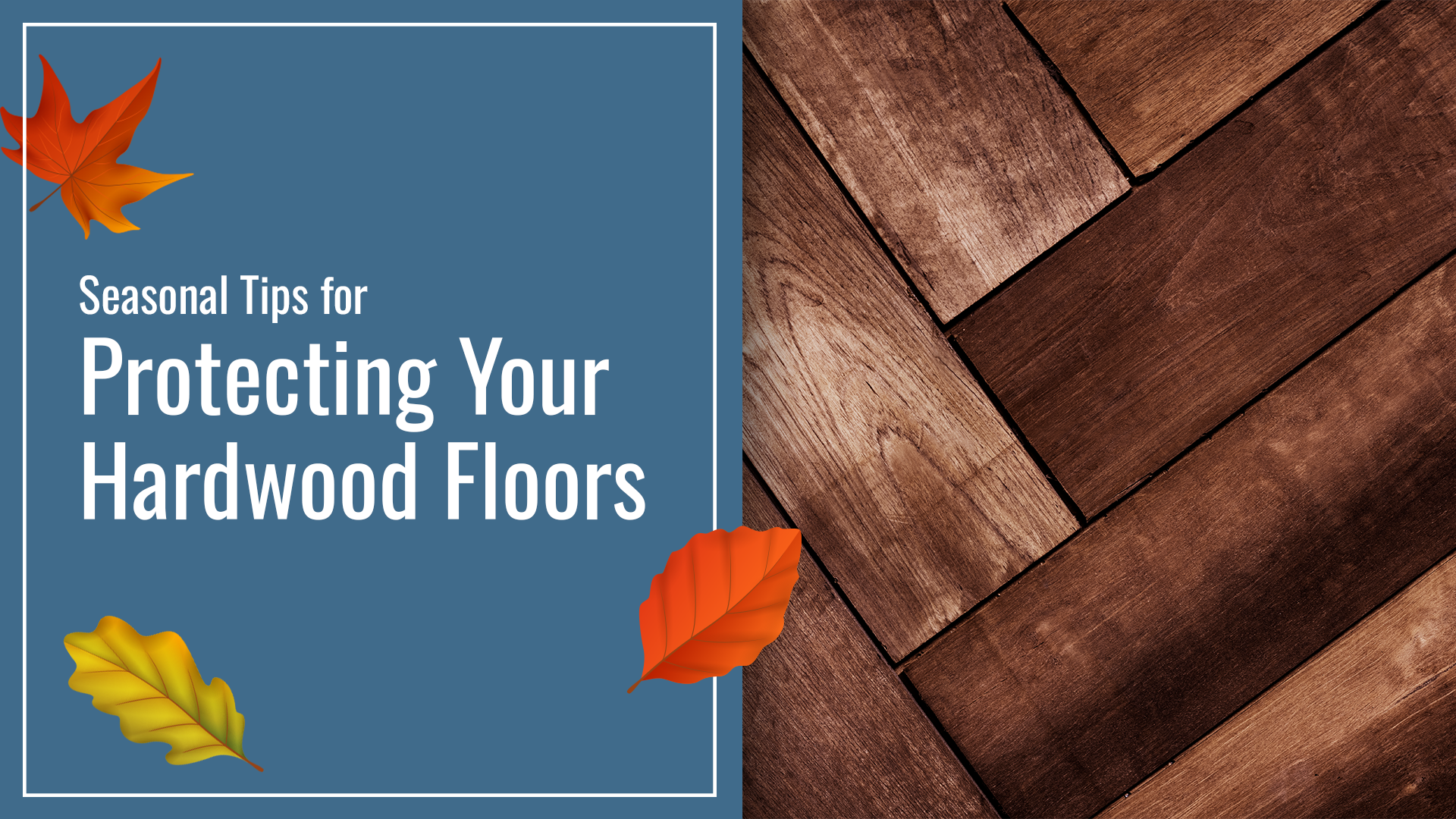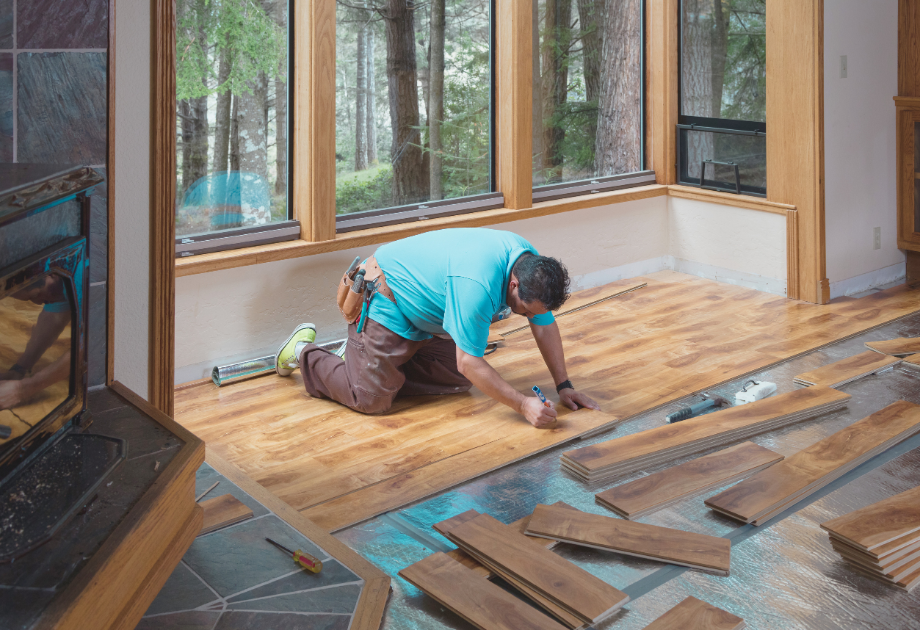Seasonal Tips for Protecting Your Hardwood Floors
Seasonal Tips for Protecting Your Hardwood Floors

Ah, fall! The season of cozy sweaters, pumpkin spice everything, and... hardwood floor gaps? As the weather transitions from the warmth of summer to the chill of winter, your hardwood floors are quietly responding to the shift—sometimes in ways that might surprise you. Whether it’s swelling in the summer or cracks appearing in the winter, seasonal changes can have a significant impact on your hardwood floors. Don’t worry, though—we’re here to give you the inside scoop on how to keep your floors in tip-top shape year-round.
Seasonal Maintenance Tips for Hardwood Floors
Just like your home needs seasonal care (think HVAC tune-ups and gutter cleaning), your hardwood floors do, too. Hardwood is a natural material, and it expands and contracts as the humidity and temperature in your home change. So, if you’ve ever asked yourself, why is my hardwood floor shrinking in the winter or swelling in the summer, you’re not alone.
Let’s start with understanding how weather impacts hardwood floors.
.png)
Fall and Winter Care: Managing Dry Air and Gaps
When the temperatures drop and you start cranking up the heat, the air inside your home becomes much drier. This lack of humidity is one of the main culprits behind those alarming gaps and cracks that sometimes show up in hardwood floors during the colder months. These gaps might make you wonder if your floors are defective, but rest assured—they’re not. It’s a natural response to the wood losing moisture and shrinking.
So, what can you do? The key is controlling the moisture levels in your home. A simple humidifier can be the solution! Aim to keep indoor humidity between 35% and 55% to prevent significant shrinking and those dreaded gaps in hardwood floors during winter. You can even use a hygrometer to monitor moisture levels in wood—trust us, it’ll make your floors much happier!
For more insights into how moisture plays a significant role in your hardwood floors, check out our blog post on How Moisture Affects Hardwood Floors.
Tools and Cleaning Solutions for Effective Maintenance
During the cooler months, it’s not just about keeping moisture levels in check. Regular cleaning is also key to preserving the shine and longevity of your floors. Opt for a microfiber mop and hardwood-safe cleaning solution to keep dirt and debris from building up. Avoid using too much water, though—it can sneak into any gaps or cracks and create long-term problems.
Pro tip: Place area rugs in high-traffic areas during the colder months. Not only will this protect your floors from scratches, but it also adds warmth (and who doesn’t love the feeling of a soft rug underfoot in the winter?). We’ve got more tips in our blog post on using Seasonal Area Rugs and Carpets.
The Key to Long-Lasting Floors: Installation and Acclimation Done Right
Now, let’s talk installation. One of the best ways to minimize seasonal damage is to ensure your hardwood floors are installed correctly from the start. Proper installation and acclimation are essential for protecting your investment as the seasons change.

Importance of Proper Installation
Have you ever noticed your hardwood floors buckling in the summer? This can happen when moisture levels aren’t consistently managed, especially if your floors weren’t installed with a proper moisture barrier. Hardwood floors are highly sensitive to changes in humidity, and without a barrier in place, they can expand too much in humid conditions and buckle. That’s why, when you’re installing hardwood floors, it’s essential to work with professionals who understand the importance of moisture control. A Step Above Flooring takes this process seriously to ensure you won’t be dealing with issues like cupping or buckling when the seasons shift.
Acclimation: Why It Matters
Before installation even begins, your hardwood floors need time to acclimate to your home’s environment. This means letting the wood sit in the space for a few days so it can adjust to the indoor humidity and temperature. It might seem like a small step, but it can make a real difference in minimizing future expansion and contraction. Acclimation is especially important here in the Midwest, where temperature and humidity can swing drastically from season to season.
Strategies to Minimize Seasonal Damage
Once your hardwood floors are installed and acclimated, there are still steps you can take to protect them from seasonal changes. In addition to controlling humidity, it’s smart to add felt pads to the bottom of furniture to avoid scratches and consider rotating area rugs or carpets seasonally. This helps distribute wear more evenly and protects your floors from sudden changes in moisture.
Protecting Your Investment with A Step Above Flooring
Caring for your hardwood floors doesn’t have to be complicated—especially when you have the right information. Whether it’s understanding the relationship between moisture and wood or choosing the best tools for maintenance, being proactive about seasonal changes can save you from expensive repairs in the future.
At A Step Above Flooring, we’re passionate about helping you protect your floors so they look beautiful for years to come. If you’ve noticed swelling, gaps, or other seasonal damage, don’t hesitate to reach out to us.
Reach out to our team today!
If you are looking for more flooring tips that will help you keep your hardwood floors looking beautiful for years to come, follow A Step Above Flooring on Facebook, Pinterest, and LinkedIn.
Happy with the A Step Above Flooring difference? Leave us a five-star review on Google here!
